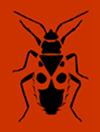Perennial alternative crops for biogas production increase arthropod abundance and diversity after harvest - results of suction sampling and metabarcoding
IF 1.2
3区 农林科学
Q2 Agricultural and Biological Sciences
引用次数: 0
Abstract
. The effects of novel perennial energy crops on arthropod abundance and diversity were tested using three fi eld trials in Bavaria. Established cup plant ( Silphium perfoliatum ), Virginia mallow ( Sida hermaphrodita ) and tall wheat grass ( Thinopyrum ponticum ) plots were sampled in autumn using a modi fi ed leaf blower and their arthropod faunas compared with that recorded in maize plots. At the time of sampling, maize, cup plant and Virginia mallow had already been harvested and samples from the remaining stubble were compared with those from open ground. Collembola were the most abundant group. The highest abundance and diversity of arthropods was recorded in tall wheat grass, with Hemiptera and Aranea especially bene fi tting from the green and taller vegetation. Post-harvest cup plant and Virginia mallow plots harboured a more diverse and more abundant arthropod assemblage than maize plots. Stubble was identi fi ed as a suitable habitat for arthropods in agricultural fi elds. In conclusion, the integration of perennial energy crops into existing biogas production systems could play an important role in supporting arthropods in agricultural landscapes by providing crucial structures and resources, such as the grassy vegetation of tall wheat grass in autumn and the long-lasting stubbles of cup plant and Virginia mallow.多年生沼气替代作物增加了收获后节肢动物的丰度和多样性——抽吸取样和元条形码的结果
.在巴伐利亚州进行的三个田间试验测试了新型多年生能源作物对节肢动物丰度和多样性的影响。建立的杯状植物(Silphium perfoliatum)、弗吉尼亚锦葵(Sida hermachrodita)和高麦草(Thinopyrum ponticum)地块在秋季使用改良的吹叶机及其节肢动物区系进行了采样,与玉米地块中记录的节肢动物区组进行了比较。在取样时,玉米、杯状植物和弗吉尼亚锦葵已经收获,并将剩余残茬的样本与开阔地的样本进行了比较。弹尾虫是数量最多的群体。节肢动物的丰度和多样性最高的是高麦草,半翅目和Aranea尤其受益于绿色和较高的植被。收获后的杯状植物和弗吉尼亚锦葵地比玉米地拥有更多样、更丰富的节肢动物群落。Stubble被认为是农田节肢动物的合适栖息地。总之,将多年生能源作物整合到现有的沼气生产系统中,可以通过提供关键的结构和资源,如秋季高麦草的草地植被,以及杯状植物和弗吉尼亚锦葵的长期短梗,在支持农业景观中的节肢动物方面发挥重要作用。
本文章由计算机程序翻译,如有差异,请以英文原文为准。
求助全文
约1分钟内获得全文
求助全文
来源期刊
CiteScore
2.30
自引率
7.70%
发文量
43
审稿时长
6-12 weeks
期刊介绍:
EJE publishes original articles, reviews and points of view on all aspects of entomology. There are no restrictions on geographic region or taxon (Myriapoda, Chelicerata and terrestrial Crustacea included). Comprehensive studies and comparative/experimental approaches are preferred and the following types of manuscripts will usually be declined:
- Descriptive alpha-taxonomic studies unless the paper is markedly comprehensive/revisional taxonomically or regionally, and/or significantly improves our knowledge of comparative morphology, relationships or biogeography of the higher taxon concerned;
- Other purely or predominantly descriptive or enumerative papers [such as (ultra)structural and functional details, life tables, host records, distributional records and faunistic surveys, compiled checklists, etc.] unless they are exceptionally comprehensive or concern data or taxa of particular entomological (e.g., phylogenetic) interest;
- Papers evaluating the effect of chemicals (including pesticides, plant extracts, attractants or repellents, etc.), irradiation, pathogens, or dealing with other data of predominantly agro-economic impact without general entomological relevance.

 求助内容:
求助内容: 应助结果提醒方式:
应助结果提醒方式:


